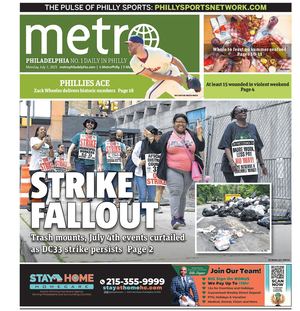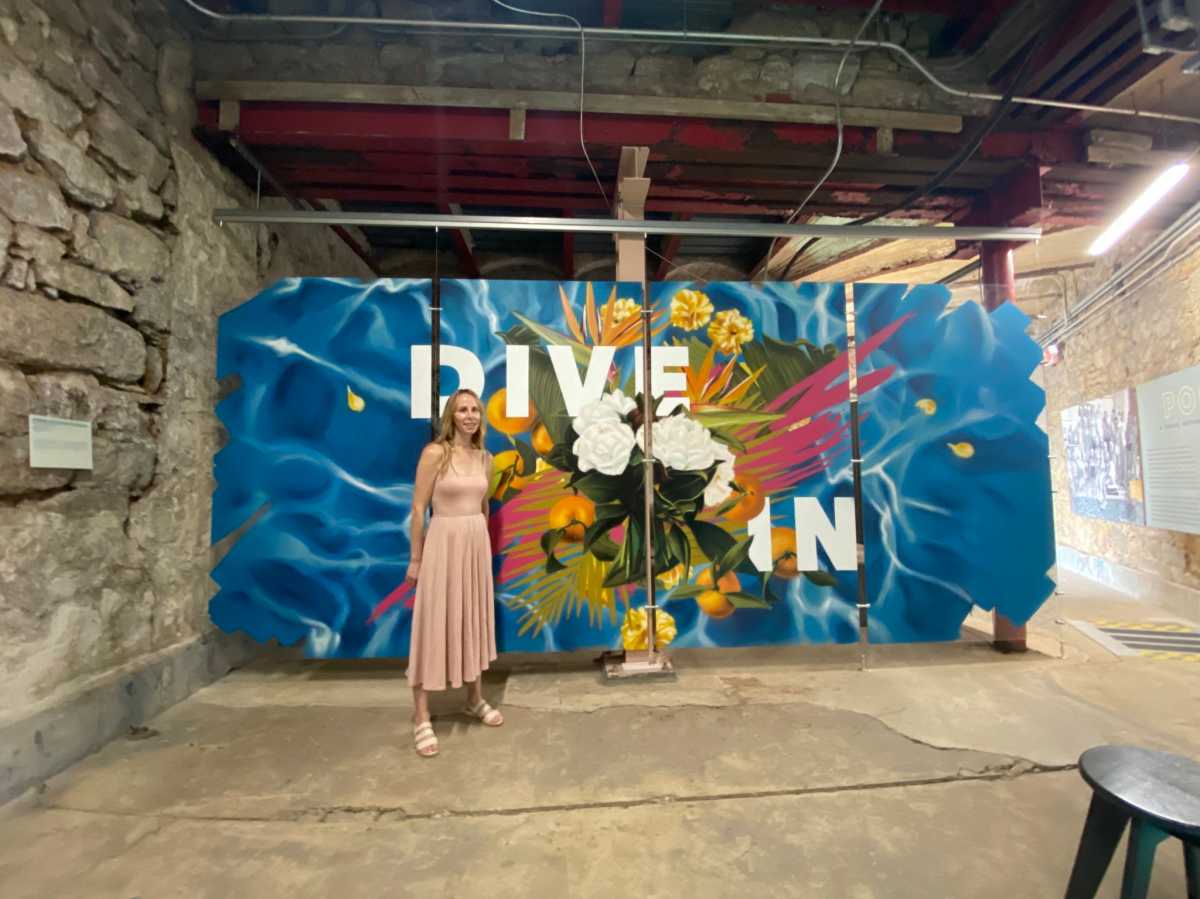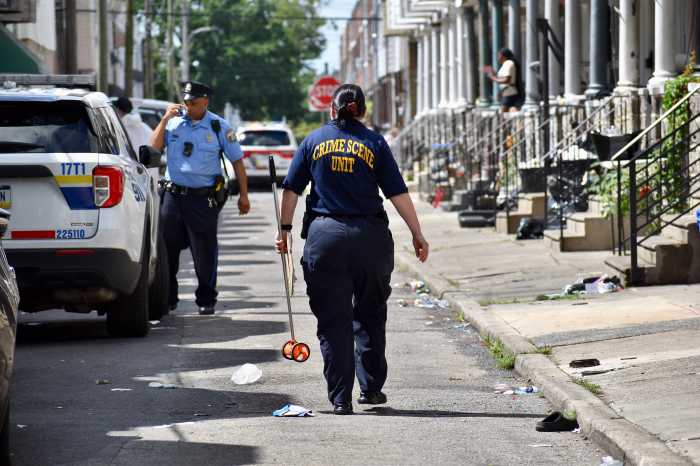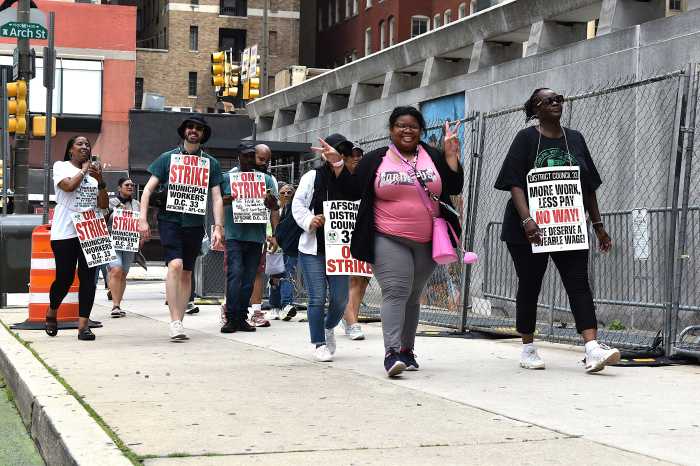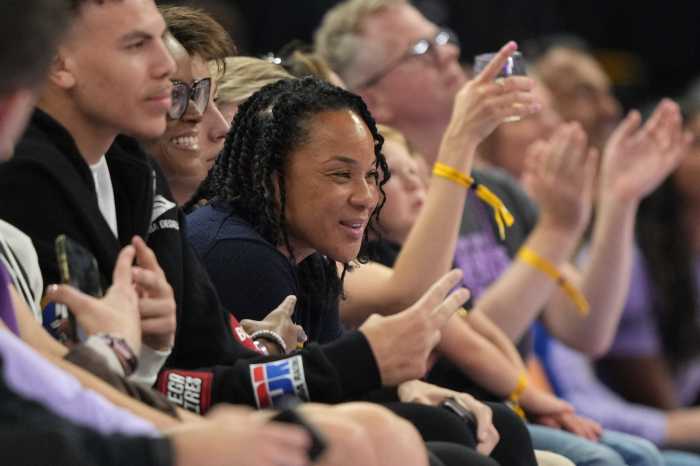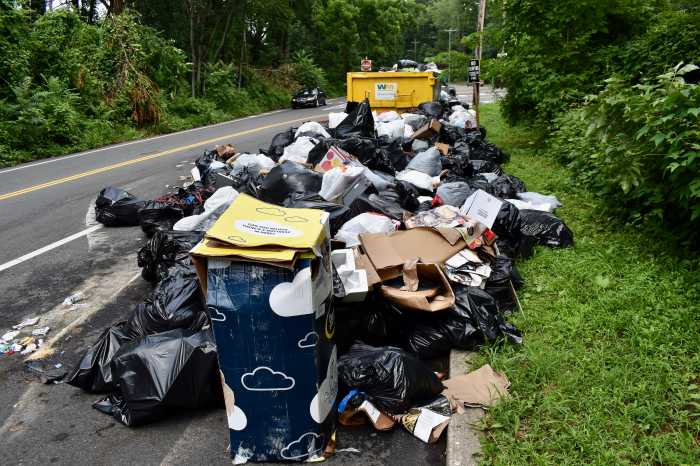In September 2021, Hurricane Ida boomeranged through the East Coast causing flooding and destruction throughout the Philadelphia area. And although that may feel like a lifetime ago, the remnants of Ida have persisted well into 2022.
The brand new immersive educational art exhibit titled ‘POOL: A Social History of Segregation’ was set to open in September, but found itself submerged by the wrath of Ida.
‘POOL’ is tucked behind the Philadelphia Museum of Art in the Historic Kelly Pool of the Fairmount Water Works directly next to the Schuylkill River. “Water Works took in water, so the space was (done), essentially the interpreter center and like all of the exhibits were just done,” explained Dionne Watts-Williams, Communications Manager for Fairmount Water Works.
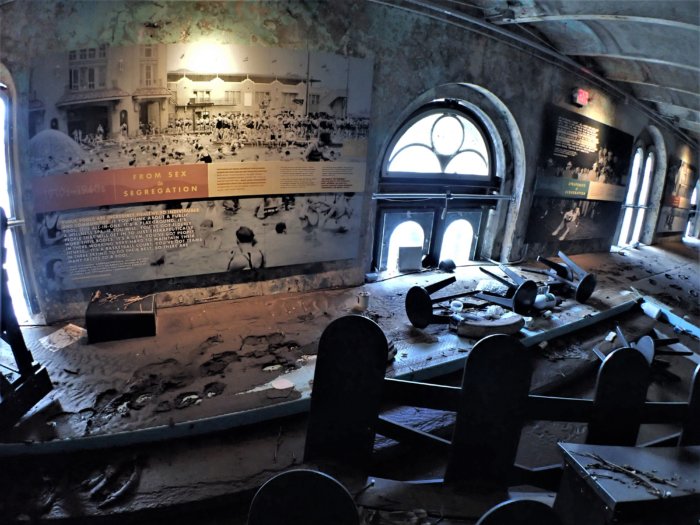
Luckily there was a contingency plan in place for if a flood occurred, allowing much of the ‘POOL’ exhibit to be saved.
“Karen, our executive director and Victoria (the curator), were able to be very thoughtful and mindful of how the exhibits were installed and everything from the materials to positioning,” said Watts-Williams.
Relatively minor fixtures of the ‘POOL’ exhibit were destroyed, things like televisions, seating, and the audio system. Before the Kelly Pool was filled with water from the Schuylkill, it was filled with digital water and being watched over by ‘Two Lifeguards,’ a mixed-media installation from New York-based artist Azikiwe Mohammed. Before the speakers were water-logged, podcast audio from ‘Crossing The Lane Lines’ by Naji Ali played outside the exhibit.
But it seems that the folks at the Water Works have learned from this unfortunate situation. After the flood Watts-Williams explains “recordings and the devices are literally bolted to the ceiling or higher up on the wall to avoid this type of situation. Different panels are easily removable or just made out of a material that’s more sustainable and easy to clean.”
Now, nearly seven months after Ida tore through the country, ‘POOL’ is open to the public.
‘POOL’ was curated by artist Victoria Prizzia with playwright James Ijames and features the work of numerous diverse artists, as well as contributions from various historians. The exhibit is completely free to attend and looks at pools through the lens of race and gender.
Prizzia highlights the regional importance pools served in Philadelphia noting “Philadelphia was prolific, having nine public baths by 1883.” These baths existed for hygiene purposes and were segregated by gender until the 1920’s. Following World War II, as swimming for sport and leisure became more prominent and running water took bathing into the home, pools became segregated on the grounds of race.
Throughout ‘POOL,’ attendees can see recognizable faces such as Martin Luther King Jr. and Mr. Rodgers, but will also learn new stories like that of the Honey’s and the Bears and historic “swim-ins.” ‘POOL’ features beautiful modern art structures, engaging games and trivia, as well as a wealth of knowledge about stories that often go untold.
“I think when people think about the civil rights movement, they think about buses and schools, and they don’t think about pools,” explains Prizzia.
‘POOL: A Social History of Segregation’ is open Wednesdays through Fridays from 11 a.m. to 5 p.m. and Saturdays from 10 a.m. to 5 p.m. at the Historic Kelly Pool of the Fairmount Water Works. Admission is free. For information, visit poolphl.com.
